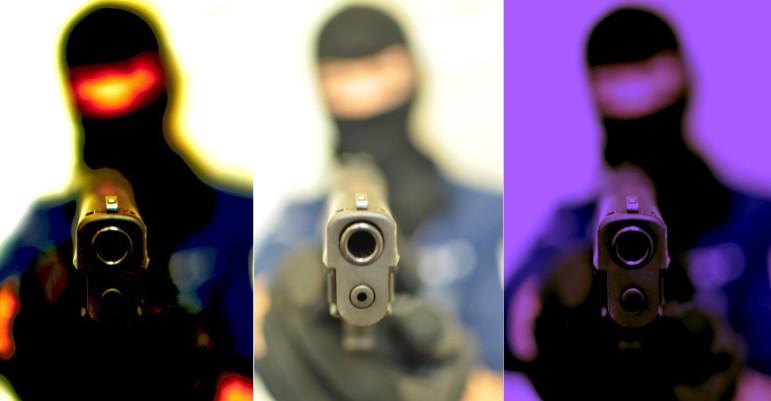
Sandra1983
A pair of reports this week from the Justice Department provide equal-opportunity discomfort. Protesters who spoke with certainty about what transpired between Ferguson Police Office Darren Wilson and teenager Michael Brown are confronted with facts that run counter to the sloganized version of their fatal encounter. Defenders of the Ferguson PD—and more broadly of the way police officers approach communities of color—had to contend with the DOJ finding that law-enforcement there had treated black citizens as walking ATMs, arresting them in large numbers on flimsy evidence so they could empty their pockets.
The two sets of findings, which in no way contradict, should spur soul searching. But missing from the conversation about policing and race is a topic that might or might not have been relevant in the Wilson-Brown encounter, but is certainly on-topic in other police shootings that have stirred controversy.
There’s reason to believe that stereotypes, dispersing as quickly as they are formed in the mind’s eye, can control the crucial moments before a police officer pulls the trigger on a suspect. And it’s hardly an atrocity for the humans charged with enforcing our laws to be at the mercy of prevalent implicit biases, especially when so little has been done to account for them.
When it comes to stereotypes, quick shoot/don’t shoot research might present some of the most illuminating and challenging findings relating to police-community interactions. After all, it’s difficult to get an objective assessment of how much biases affect anyone in our “colorblind” society. The embarrassment of a clear and long-lasting national history of discrimination feeds a social desire to not seem prejudicial. So, very few people today would admit, even to themselves, that overt discrimination played a role in any act. They may not even be aware that it did—especially when life-and-death decisions are made in the blink of an eye.
But the illusion of colorblind impartiality dissolves in studies of police-suspect encounters, in which civilians and officers both hesitate to shoot armed white suspects. Or it could also be said that officers were less likely to hesitate shooting an armed Black suspect, a phenomenon researchers of the 2007 study published in the Journal of Personality and Social Psychology connect to stereotype reinforcement. Officers and civilians, black or white, may tend to associate armed suspects with blackness, and vice versa.
The 2007 report was conducted as three smaller studies of a 100 trials on three samples: local (Denver) police department officers, members of the community they served, and a self-selected group of officers from across the country. But these studies cite supporting research in social psychology indicating in-group preferences in people as far back as 2002. And a more recent, 2012 study came to similar conclusions: Officers were quicker to shoot armed black targets and more likely to not shoot unarmed Latinos, Asians, and whites. They also found a relation between police decision-making toward blacks and their level of contact, attitudes, and stereotypes.
That’s because the reasons why people may inaccurately and tacitly associate being armed with being black are numerous, not ending with media corporations that disproportionately broadcast news stories about violent black suspects or air mainstream music videos of black artists glorifying violence for its own sake. Still, the unfounded stereotype of violent African Americans has existed well before the 24 hour news cycle or hip-hop’s decapitation for capital gain.
So, these negative associations are hardly new discoveries, but nonetheless may be more relevant than ever before. Studies since 1999 until as recently as 2013 have demonstrated that people may hold implicit biases entirely unaligned with their explicit beliefs. If so, then the idea of police reform based only in enforcement policy changes is almost laughable. No matter how much we test police officers with simple psychological batteries, regardless of how we instruct police officers to establish consent for searches, and even if Broken Windows ends tomorrow, officers will still be vulnerable to their biases – and so will the communities they serve.
That means potentially more Amadou Diallos, more Kimani Grays, and more Ramarley Grahams.
Nevertheless as a city there’s a lot we can do to nullify and even reverse the effects of implicit biases, even if as individuals we may be at their mercy. Certainly, it’s significant that we end policies that normalize and reinforce harmful biases, like Broken Windows’ insistence that low level criminality, especially in non-White communities, is a sign of worse disorder to come. But it could be more important that reform include aggressive and continual efforts to keep officers aware of their biases while teaching techniques to overcome them. And any efforts to change biases will require holding officers regularly accountable: Law-enforcers need to know that sensible, objective justifications will be expected of any of their decisions.
Repairing community-police relations in a “colorblind,” post-Civil Rights era won’t simply come from strategy changes, nor from pretending that police officers hold beliefs far different from our own. Quite the opposite: The fears and stereotypes that drive some officers to pull the trigger faster when facing black suspects are similar to the ones that permeate our classrooms, law offices, newsrooms and the minds of people serving on juries and as witnesses. Perhaps the biggest hurdle to progress will be coming to terms with how much police shootings reflect the darkest, unspoken sentiments scarring our society.
The Blinker
Geoffery Mullings










One thought on “Subconscious Biases Might Affect When Cops Pull Trigger”
Yes, we all have biases. Put fear and a gun into the situation and you have a dead person.